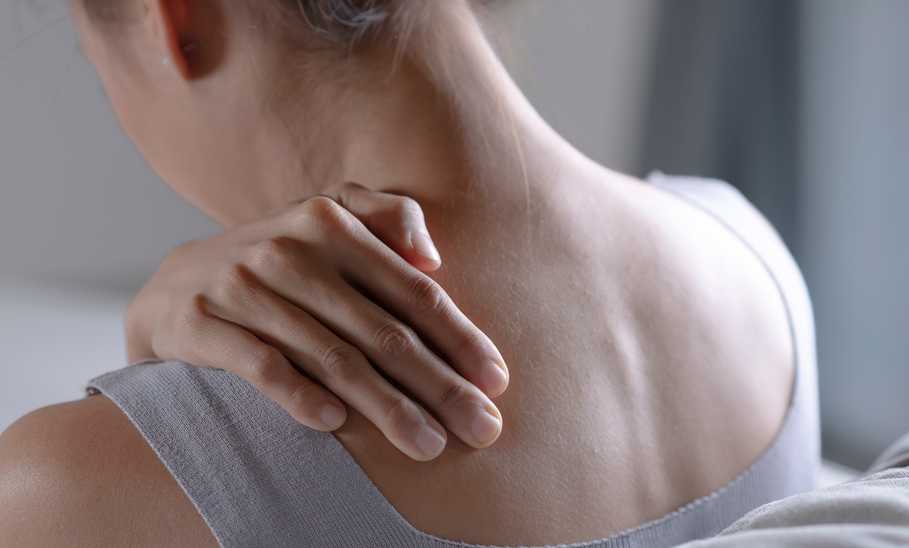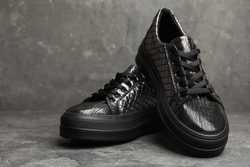Large Breasts and Upper Back Pain: Here's What You Need to Know

Our evaluations and opinions are not influenced by our advertising relationships, but we may earn a commission from our partners’ links. This content is created by TIME Stamped, under TIME’s direction and produced in accordance with TIME’s editorial guidelines and overseen by TIME’s editorial staff. Learn more about it.
After my second baby, my bra size grew more than my family did. It seemed like all of a sudden I was dealing with skin rashes, tight-fitting shirts, and upper back pain. I had to buy a completely new bra wardrobe after each child because my breasts just seemed to keep getting larger.
What I’ve learned along the way is that proper fitting bras— ones that provide plenty of support and don't feel like the straps are digging into my skin—were the most important factor in minimizing my pain.
It took me a while to connect my back pain with the fact that my breasts were a lot bigger than they used to be. I don’t have the perfect solution, but I know working on strengthening my back and core has seemed to ease the discomfort. I also wanted to get the scoop on back pain and large breasts from a professional. Here’s what I learned.
Research has shown that the larger your breasts are, the more likely you are to have back, shoulder, and neck issues.
“Larger breasts can increase the forces acting on the spine and potentially cause thoracic kyphosis, which is when the upper back starts to bend forward and affects the curve of the spine,” explains Meghan Bartlett, PT, DPT, a physical therapist at Mass General Brigham’s Spaulding Rehabilitation in Massachusetts.
Dr. Bartlett says a larger breast size can cause upper back pain because of how your breasts affect your posture. If your heavy breasts are pulling forward, this can give you a more rounded forward-flexed posture, she explains.
“The increased weight of a larger breast disrupts your center of gravity, causing the muscles of the back, neck, and shoulders to compensate,” says Dr. Bartlett.
When you have large breasts, your upper back has to work harder to keep you upright. So while larger breasts tend to cause upper back pain more often than lower back pain, your lower back can still be affected, says Dr, Bartlett. This has to do with changes in your upper back that cause your lower back to have to adjust and correct itself to those changes. Over time, your lower back can also be affected.
Bras are made to provide support and help stabilize the breasts during movement, such as when we exercise. They also help support good posture. However, according to research, 80% of young women don’t wear the correct bra size.
“Wearing the wrong bra size can lead to postural changes or muscular imbalances where the muscles on the front of the chest may become shortened and the muscles of the back become over-stretched and weak,” says Dr. Bartlett.
When this happens, the neck and shoulders round out and shift forward, which wreaks havoc on our posture, according to Dr. Bartlett.
“Weight gain or loss, pregnancy, breastfeeding, or even your menstrual cycle can cause changes in breast size,” says Dr. Bartlett. Replace your bras regularly, especially if you've been through some of these life changes. And make sure you're fitted correctly again with any change in breast size.
Unfortunately, as we get older, back pain due to large breasts can become more obvious, and this has to do with hormone changes.
“During menopause, the body stops producing the hormone estrogen, which can lead to changes in the size, shape, and feeling of our breasts,” says Dr. Bartlett. She explains that as we get older, bone density in the spine changes along with the supportive muscles along the spine. This can cause issues related to our posture.
According to Dr. Bartlett, there are several things that can happen if you have large breasts, such as:
Other problems that large breasts can cause include:
According to Dr. Bartlett, treating back pain that is caused by large breasts is really individualized—what works for someone else might not work for you.
That said, Dr. Bartlett says there are some things you can try at home to help you feel better:
It’s also good to make sure you’re wearing a supportive bra. Sports bras, such as SHEFIT’s High Impact Ultimate Sports Bra, are made so your breasts won’t bounce too much while you’re moving and exercising. While wearing one, it should feel like your breasts are fully supported. Look for brands specializing in bras for large breasts with more inclusive sizing, such as ThirdLove.
If you’ve tried home remedies and haven’t found relief, there are a few things you can do after talking with your healthcare provider.
Dr. Bartlett recommends seeing a physical therapist (PT) for an evaluation and treatment plan. A PT can focus on posture, stretching, and giving you strengthening exercises for the back, neck, and shoulders.
But in some cases, a breast reduction might be necessary. According to the Mayo Clinic, this type of surgery can benefit people with large breasts who are experiencing:
A 2019 study in the European Spine Journal suggests a breast reduction, known as reduction mammoplasty, can decrease back pain in those who have large breasts. It said, “The evidence gleaned suggests that [reduction mammoplasty] reduces the prevalence of back pain in patients with large breasts.”
A 2019 study from the journal Plastic and Reconstructive Surgery—Global Open indicates a breast reduction can not only ease back pain but also improve posture and center of gravity.
But a breast reduction isn’t recommended for those who:
Breast reduction surgery averages about $6,771, according to the American Society of Plastic Surgeons. This doesn’t include the cost of anesthesia or other expenses related to the surgery, such as medications or hospital fees. The good news is breast reduction surgery is often covered under insurance.
Dr. Bartlett recommends talking with your healthcare provider or a spine specialist to see if you could benefit from breast reduction surgery.
There can be many causes as to why someone is having back pain, explains Dr. Bartlett. “Two people with identical body types and breast size could have completely different clinical presentations.” Someone who sits a lot of the day at a desk could look different than someone who has a physically demanding job, even with similar body types and breast size, she adds.
“If you experience neck and upper back pain, have done conservative management, and have a large chest, then your breast size could be a contributing factor,” says Dr. Bartlett.
One older study in Australia stated there doesn’t seem to be an agreement in the medical community on what constitutes a large breast but suggested it could be a D cup or larger, or a size 18, which equates to a size 40 in the United States.
The information presented here is created by TIME Stamped and overseen by TIME editorial staff. To learn more, see our About Us page.



